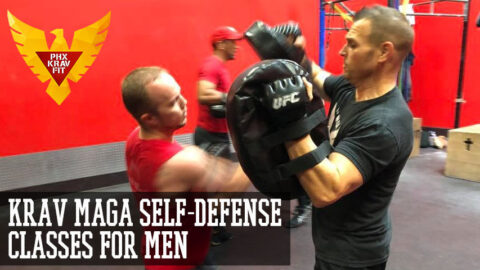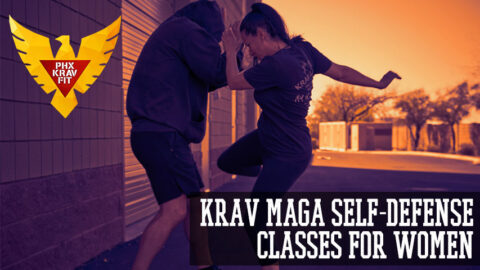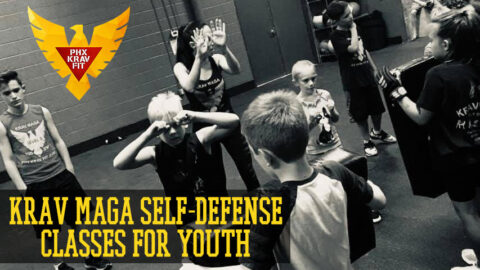Three Reasons Why People Lose Fights
There are two main reasons why people “lose” fights, meaning, they do not come out successful from them. Take two equally skilled boxers, one cardiovascularly conditioned, and the other not. Giving that they have equal skill, who would win? The conditioned one of course. The same holds true for kick boxers, karate practioners, grapplers, weapon’s fighters, or any other athlete for that matter. Therefore, it is imperative that when training for self-defense, a person improves (and maintains) their wind. Riding a bike, running, fast walking, swimming, and definitely sparring all improve this aspect.
The second reason why people lose fights is that of range, or what is referred to as “Area of Combat”. There are five main areas including: Kick Boxing, Close Quarters Combat, Ground Fighting, Weapons and Defense Against Multiple Opponents. If a person is only familiar with one area, they will most likely lose if an altercation falls in anything other than their specific range. A person who only trains in kicking arts will lose against a grappler most of the time. A boxer will lose in a weapon’s fight, against a weapon’s man. A grappler will get beaten in mass attack situation. Finally, a weapon’s man will most likely lose if all he knows is weapons, and then all of a sudden falls into a situation where no weapons are available to him.
Being one dimensional simply does not pay off. This has gotten many skilled fighters in trouble out on the street. Therefore, one has to learn every Area of Combat. They have to study and train the most effective tools in each of those Areas. Only then are they on the way to becoming a complete fighter.
There are systems that are now claiming to be able to adapt to multiple ranges (i.e. kick boxing and ground fighting), have had tremendous success in “no rules” fighting. Once again, they have continued to push the limits of martial arts. The hybrids have picked up on the first reason of why people lose fights, by becoming some of the most conditioned athletes on the earth. They have also started to become responsible for more Areas of Combat, which is beginning to take care of the second reason why people lose fights.
However, another reason why people lose in fights is starting to become more evident: Transitions. Hybrid arts are evolving so fast, that they have made clear the importance of these transitions. It is not good enough to just be conditioned, or even to learn more than one or two Areas of Combat anymore. One must also make the transitions from one Area to another quickly, where a few seconds is considered long.
The best example lies in picturing two boxers punching it out, sparring in boxing range. Then the instructor yells, “Alright! Now grab a weapon!”. Boxer A looks around and sees a stick on the floor, and quickly grabs it. Boxer B, stops for a second, takes a few seconds to process this change of range, then identifies the weapon and picks it up. As a result, Boxer A has a four second head start on Boxer B. Who would win? Who would start hitting with their stick first? Boxer A, because he made the transition faster. Boxer B would probably be hit multiple times, even before he had a chance to pick up the stick. The same holds true for any change, to any other range, going from grappling to weapons, close quarters to a mass attack, or vice versa.
The point is that most hybrid arts just tend to “mix” arts. They have their ground fighting day, then the next day they practice their stand-up techniques. They lack the natural transitions that are needed in a tournament and occur in street fights. Just like you cannot have a boxing class that separates every move individually. This example of the segregated boxing class would look something like a 6pm jab class, 7pm cross class, 8pm hook class and a 9pm footwork class.
It may look odd at first, if not hilarious, but this is what many hybrid arts are doing. They split their Areas up so much that they deprive themselves of the necessity of being able to blend their techniques. Just as a boxer blends the tools in his sport (jab, cross, hook, footwork, etc.), so should self-defense. On the other hand, imagine a boxer who needs even four seconds change from throwing a jab to a cross, or from using a hook to blocking and throwing a counter jab. Even beginning boxers cannot afford that time to shift. Boxers blend it all in a match: the jab, cross, footwork, hook and other tools. They quickly make the transition from one tool to another.
Not only in competitions is this true, but even more so in a street fight. Think of getting a head start on grabbing a weapon, positioning correctly in a mass attack situation, getting on mount when falling to the ground, or having the first hit in close quarters. These are priceless advantages. For a “Complete Street Fighter” to gain these advantages, they need to train in a way that not only blend arts properly, but also drills transitions over and over again. These transitions have to be in different combinations, have a variety of time limits, and also take place in unique environments. Only then has a person prepared themselves for all three reasons to not lose a fight.
In this distinction it is obvious that there is another Golden Rule when it comes to self-defense. The rule is: You fight as you train, and you train how you fight. When one realizes that there are three reasons why people lose fights, their training model is cut out for them. Training is preparation, and it is preparation that has the most profound impact on altercations. Once again, remember the key principle: Train like you fight, because you will fight like you train.



